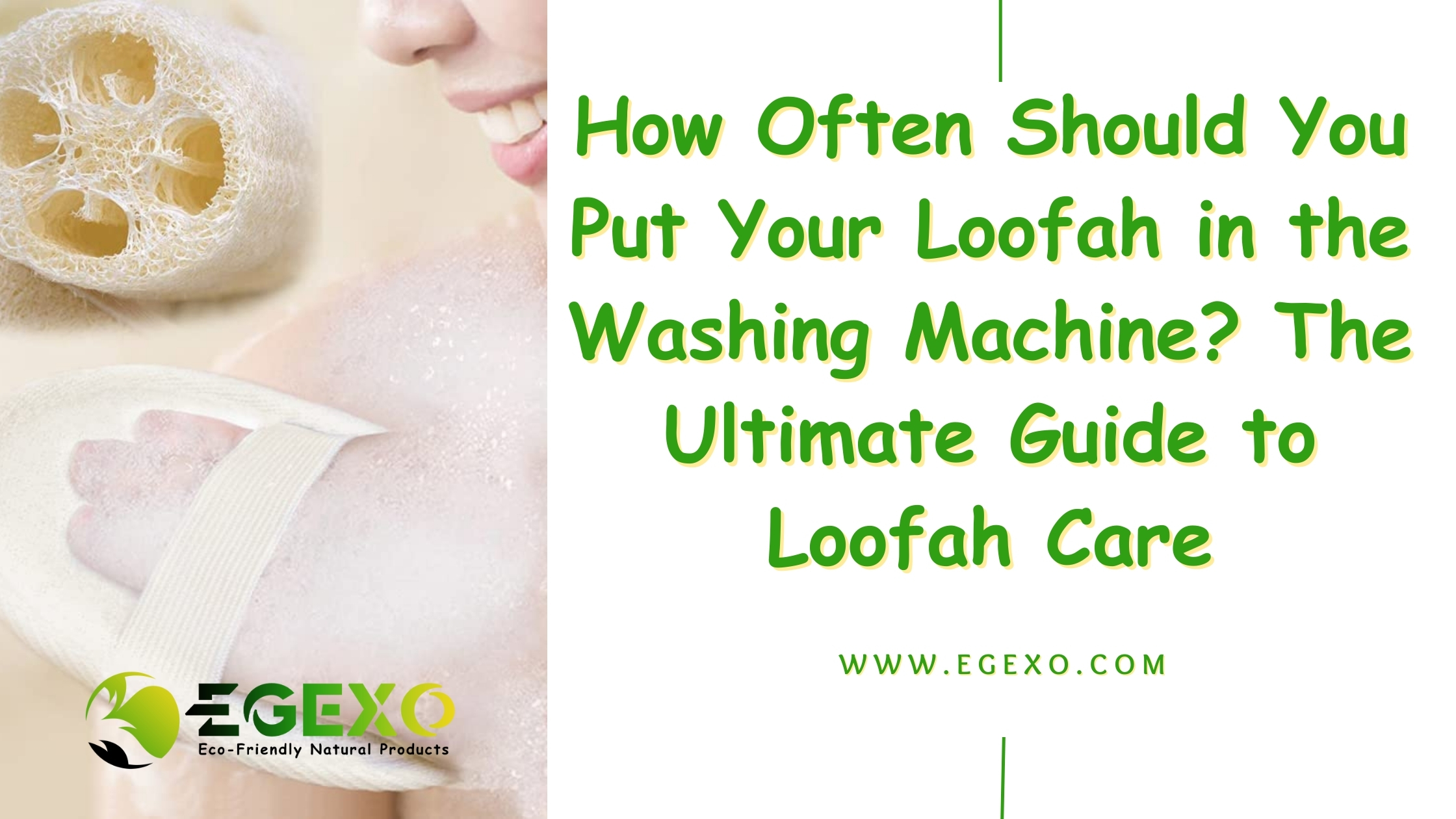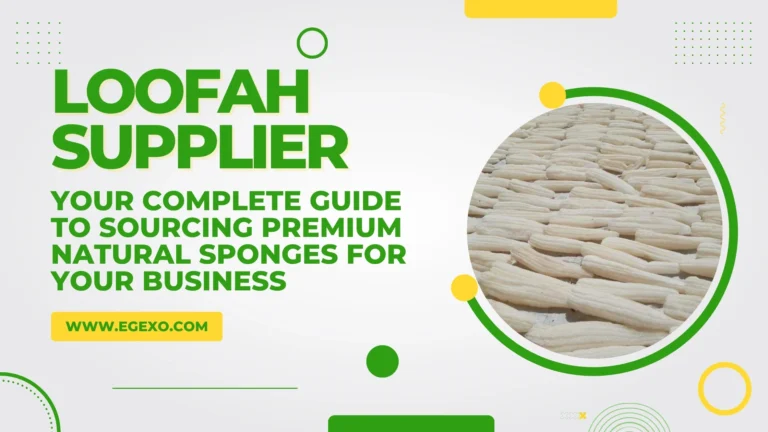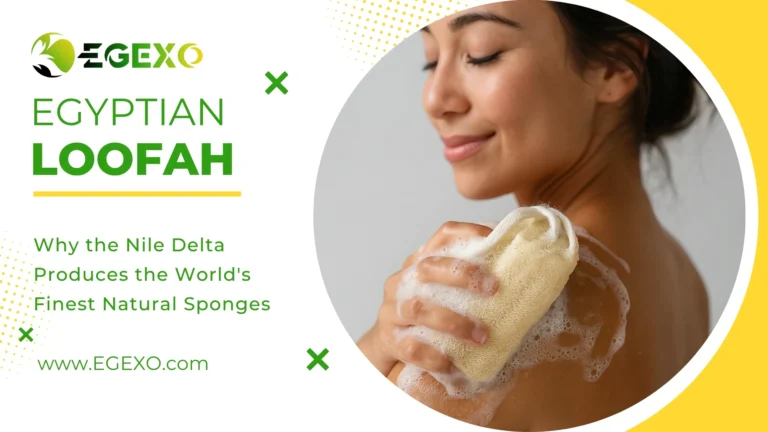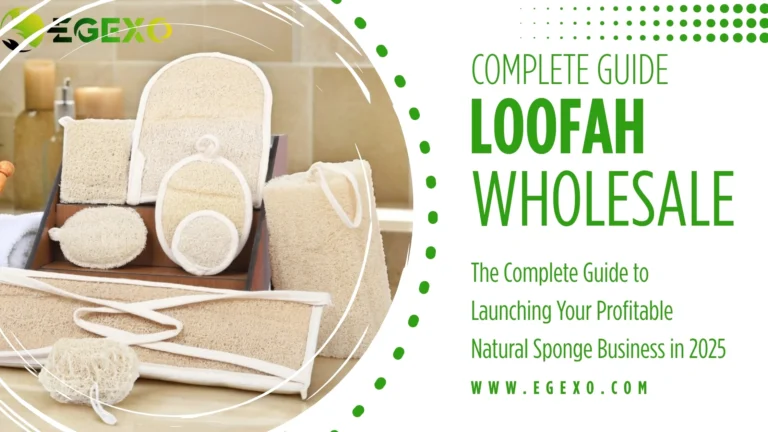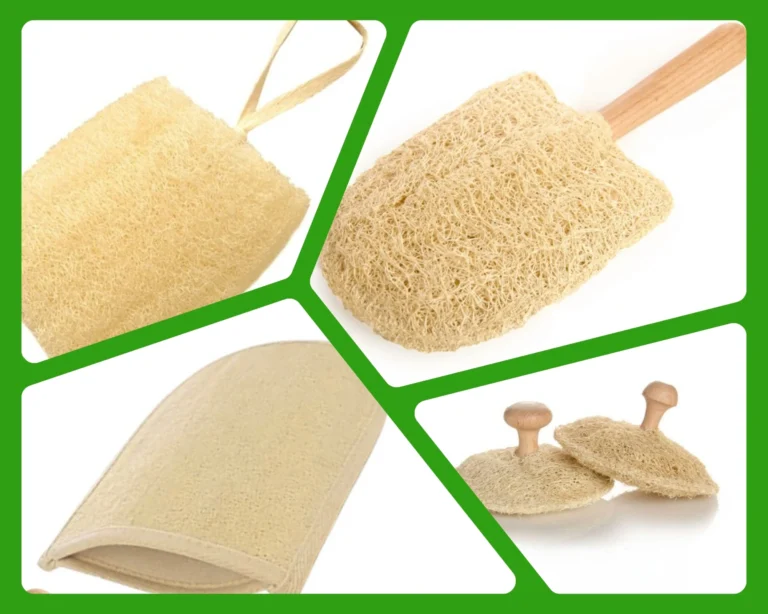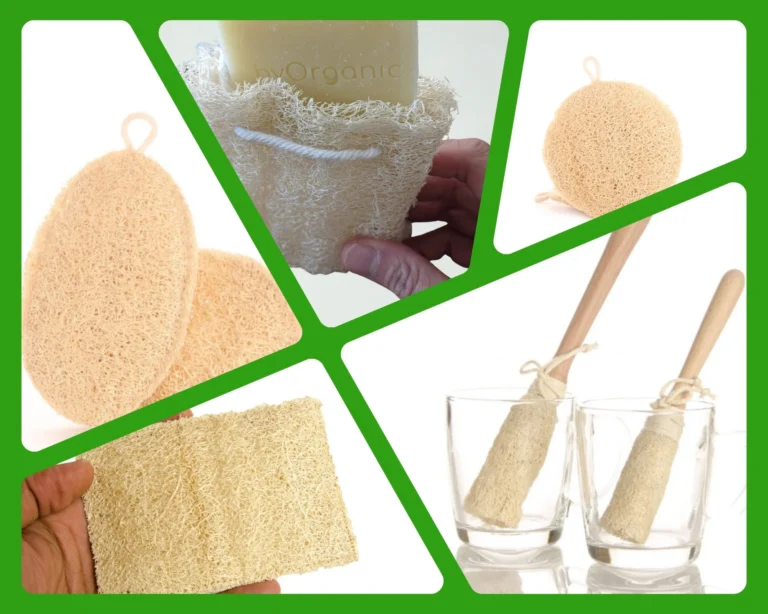How Often Should You Put Your Loofah in the Washing Machine? The Ultimate Guide to Loofah Care
Picture this: You’re enjoying your morning shower with your favorite natural loofah sponge, feeling refreshed as it gently exfoliates your skin. But when was the last time you actually cleaned that trusty scrubber? If you’re like most people, the answer might surprise you – and not in a good way.
The truth is, your beloved loofah sponge can harbor bacteria, mold, and dead skin cells faster than you’d imagine. Understanding how often should you put your loofah in the washing machine isn’t just about hygiene – it’s about protecting your skin, extending your sponge’s lifespan, and getting the most value from your investment.
Whether you’re using an Egyptian loofah for your daily skincare routine, a natural luffa sponge for kitchen cleaning, or exploring wholesale opportunities in the booming natural sponge market, proper care is essential.
Why Loofah Cleaning Matters More Than You Think
The Hidden Dangers Lurking in Your Bathroom
Dr. Sarah Martinez, a dermatologist at the American Academy of Dermatology, warns: “Natural sponges create the perfect breeding ground for bacteria when left damp in warm, humid environments like bathrooms.” Research published in the Journal of Clinical Microbiology found that loofahs can harbor harmful bacteria including Pseudomonas, Klebsiella, and even antibiotic-resistant strains.
Your loofah sponge doesn’t just collect soap and water – it accumulates:
- Dead skin cells that feed bacteria
- Soap residue that creates biofilms
- Environmental contaminants from your bathroom
- Moisture that promotes microbial growth
For businesses in the loofah industry, understanding these concerns helps you educate customers about proper care, ultimately leading to higher satisfaction and repeat purchases.
How Often Should You Put Your Loofah in the Washing Machine?
The Golden Rule: Weekly Deep Cleaning
The optimal frequency for machine washing your natural loofah depends on usage patterns, but here’s the expert consensus:
Daily users: Wash every 3-4 days Regular users (3-4 times per week): Weekly washing Occasional users: Every 2 weeks Kitchen loofahs: After every 2-3 uses
However, this is just the foundation. Between machine washes, daily maintenance is crucial for preventing bacterial buildup.
What Research Shows About Loofah Contamination
A groundbreaking study by the University of Virginia found that loofahs showed bacterial growth within 24 hours of use, even when rinsed thoroughly. The research demonstrated that machine washing at high temperatures (140°F or higher) was the most effective method for eliminating harmful microorganisms.
The Complete Loofah Washing Machine Guide
Pre-Wash Preparation: Setting Your Sponge Up for Success
Before tossing your exfoliating sponge into the machine, proper preparation ensures optimal cleaning results:
- Rinse thoroughly under hot running water to remove loose debris
- Squeeze gently to expel trapped soap and dead skin cells
- Check for damage – replace heavily worn sponges
- Pre-treat stains with white vinegar for 10 minutes
Machine Washing Settings That Work
Temperature: Hot water (140°F minimum) for bacterial elimination Cycle: Regular or heavy-duty for thorough agitation Detergent: Mild, fragrance-free options work best Load size: Wash with similar items like washcloths and towels
The Egyptian Loofah Advantage
High-quality Egyptian loofahs from reputable suppliers withstand frequent washing better than synthetic alternatives. The natural fiber structure maintains integrity even after dozens of machine wash cycles, making them a smart investment for both personal use and retail businesses.
Daily Maintenance: Beyond the Washing Machine
What Should You Do Between Washes?
Machine washing alone isn’t enough. Daily care prevents bacterial buildup and extends your loofah’s lifespan:
After each use:
- Rinse thoroughly with hot water
- Squeeze out excess moisture
- Shake vigorously to remove trapped particles
- Hang in a well-ventilated area
Weekly maintenance:
- Soak in diluted bleach solution (1:10 ratio) for 5 minutes
- Rinse extensively after bleaching
- Air dry completely before next use
The Kitchen Loofah Exception
Kitchen and household loofah products require more frequent attention due to food particle exposure and grease accumulation. These natural scrubbers should be machine washed after every 2-3 uses, with daily sanitizing between cleanings.
Signs Your Loofah Needs Immediate Attention
Red Flags That Demand Action
Even with regular washing, certain warning signs indicate your natural loofah needs immediate care or replacement:
- Musty odor that persists after washing
- Visible mold or dark spots anywhere on the sponge
- Slimy texture that doesn’t disappear with cleaning
- Falling apart or excessive fiber loss
- Changed color beyond normal aging
When Washing Isn’t Enough
Sometimes, despite your best efforts, replacement becomes necessary. Quality loofah sponges typically last 2-4 months with proper care, but heavy usage or poor maintenance can shorten this lifespan significantly.
Special Considerations for Different Loofah Types
Natural vs. Processed: Care Differences Matter
Raw loofah scrubbers require gentler handling due to their unprocessed nature, while commercial body loofahs can typically withstand more aggressive cleaning.
Pet grooming loofahs need sanitizing after each use to prevent cross-contamination between animals. Specialized pet spa products often feature antimicrobial treatments that enhance durability.
Business Applications: Bulk Cleaning Strategies
For retailers, distributors, and wholesale suppliers, demonstrating proper care extends customer satisfaction. Consider creating care instruction cards with your products, highlighting the importance of regular machine washing.
The Science Behind Effective Loofah Sanitization
Temperature and Time: The Critical Factors
Research from the International Journal of Dermatology confirms that water temperature above 140°F eliminates 99.9% of common bacteria found on natural sponges. However, exposure time matters too – minimum 15-minute wash cycles ensure thorough penetration.
Chemical vs. Heat Sanitization
While bleach solutions effectively sanitize loofahs, excessive use can degrade natural fibers. Heat-based sanitization through machine washing provides the perfect balance of effectiveness and preservation.
Creating a Sustainable Loofah Care Routine
The 7-Day Cycle That Works
Monday: Fresh start with clean, dry loofah Tuesday-Thursday: Daily rinse and air dry routine Friday: Mid-week sanitization with vinegar solution Saturday-Sunday: Continue daily maintenance Next Monday: Machine wash and restart cycle
This routine maximizes hygiene while preserving your investment in quality natural sponges.
Environmental Impact Considerations
Proper care extends loofah lifespan, reducing waste and supporting sustainable consumption patterns. For eco-conscious consumers and businesses, this approach aligns with environmental values while maintaining hygiene standards.
Troubleshooting Common Loofah Problems
Why Does My Loofah Still Smell After Washing?
Persistent odors usually indicate inadequate drying between uses or insufficient water temperature during washing. Try increasing wash temperature and improving bathroom ventilation.
Can I Use Fabric Softener on My Loofah?
Avoid fabric softeners, as they coat natural fibers and reduce the sponge’s exfoliating effectiveness. Instead, add white vinegar to your rinse cycle for natural softening.
How Do I Know When to Replace My Loofah?
Replace when washing no longer eliminates odors, visible degradation occurs, or after 3-4 months of regular use, whichever comes first.
Building Your Loofah Business: Care Education as a Competitive Advantage
Why Proper Care Information Boosts Sales
Customers who understand loofah maintenance become repeat buyers and brand advocates. By educating your market about proper care, you’re investing in long-term relationships and positive reviews.
Quality Matters in the Global Market
Whether you’re targeting the USA, Canada, Brazil, Australia, New Zealand, or the European Union, quality Egyptian loofahs paired with comprehensive care instructions create competitive advantages in crowded markets.
For businesses considering private labeling or custom product design, including care instructions demonstrates professionalism and customer focus.
FAQ: Your Loofah Washing Questions Answered
How often should you put your loofah in the washing machine for daily use?
For daily use, machine wash your loofah every 3-4 days using hot water and regular detergent. This frequency prevents bacterial buildup while maintaining the sponge’s integrity.
Can I wash my natural loofah with regular laundry?
Yes, you can wash natural loofahs with towels, washcloths, and other similar items. Avoid washing with delicate fabrics or heavily soiled clothing.
What temperature kills bacteria in loofah sponges?
Water temperature of 140°F (60°C) or higher effectively eliminates harmful bacteria. Most home washing machines achieve this temperature on hot settings.
How long do Egyptian loofahs last with proper care?
High-quality Egyptian loofahs typically last 2-4 months with proper daily maintenance and regular machine washing, significantly longer than synthetic alternatives.
Should I use bleach when washing my luffa sponge?
While occasional bleach treatment helps sanitize loofahs, regular use can degrade natural fibers. Hot water washing is generally sufficient for routine cleaning.
Can kitchen loofahs and body loofahs be washed together?
Keep kitchen and body loofahs separate during washing to prevent cross-contamination. Kitchen sponges may carry food particles and grease that shouldn’t contact body care items.
What’s the best way to dry loofahs after machine washing?
Air dry in a well-ventilated area away from direct heat sources. Ensure complete drying before next use to prevent mold and bacterial growth.
How do I know if my loofah is beyond saving?
Replace loofahs that maintain odors after proper washing, show visible mold, feel slimy, or begin falling apart. These signs indicate irreversible contamination.
Conclusion: Your Path to Perfect Loofah Hygiene
Understanding how often should you put your loofah in the washing machine transforms a simple bathroom accessory into a reliable, hygienic tool that serves you well for months. The weekly washing schedule, combined with daily maintenance, ensures optimal performance while protecting your skin and health.
Whether you’re a consumer seeking the best natural exfoliating experience or a business professional exploring opportunities in the growing natural sponge market, proper loofah care knowledge provides a foundation for success. Quality products from established suppliers, combined with appropriate care, create win-win scenarios for everyone involved.
Remember: a well-maintained loofah sponge isn’t just cleaner – it’s more effective, longer-lasting, and safer for your skin. Start implementing these practices today, and experience the difference proper care makes in your daily routine.
For premium Egyptian loofahs and comprehensive product information, explore our complete range of natural loofah products and discover why proper care makes all the difference in your bathing experience.

